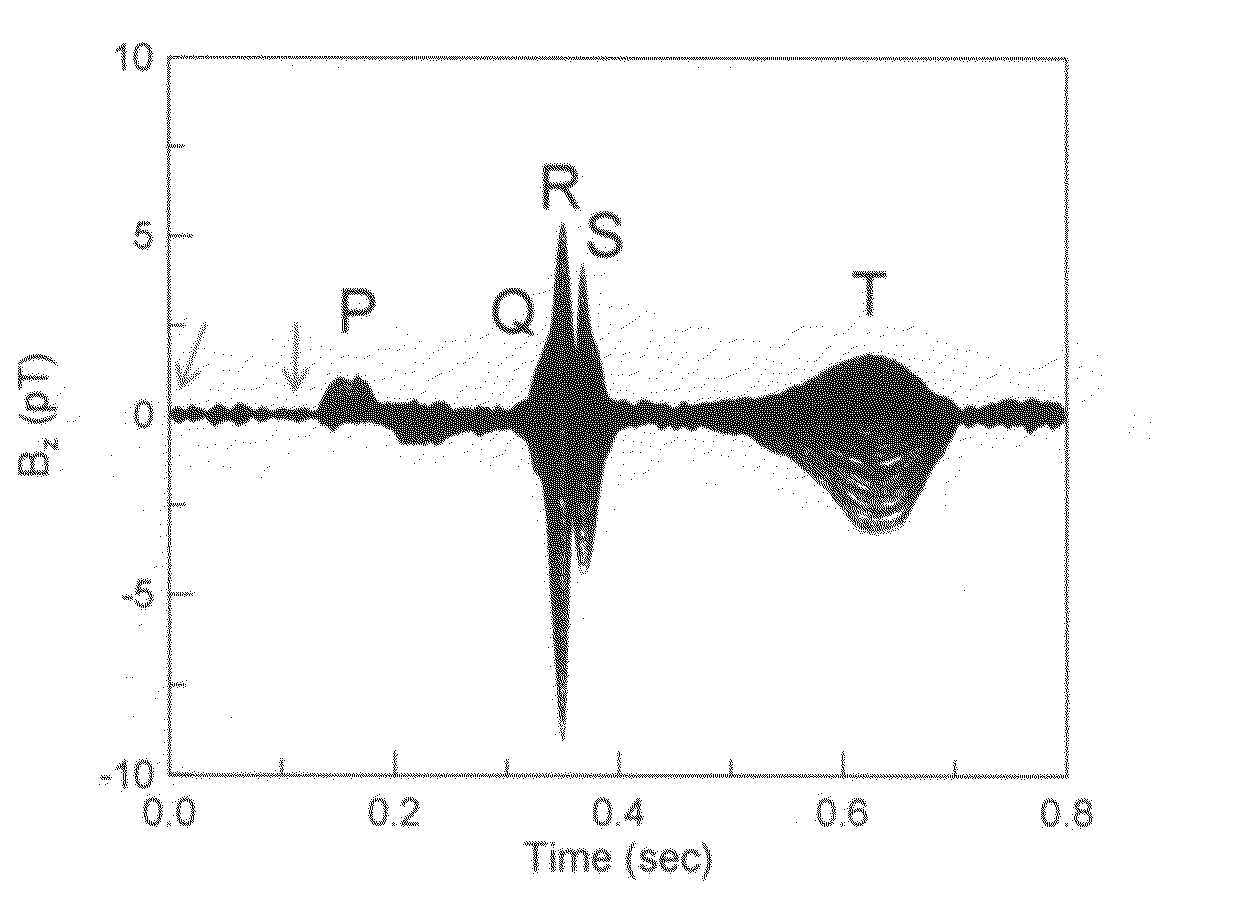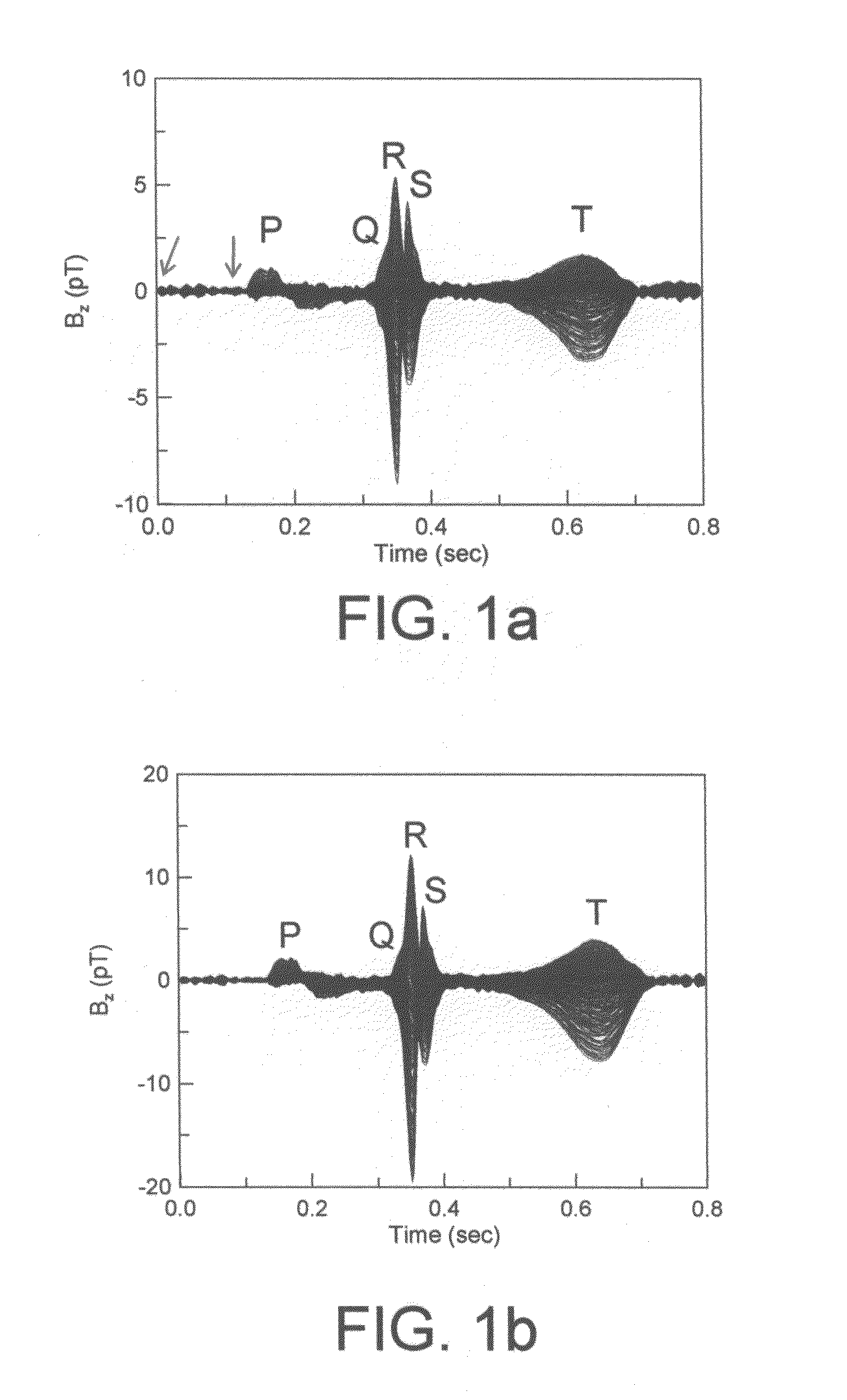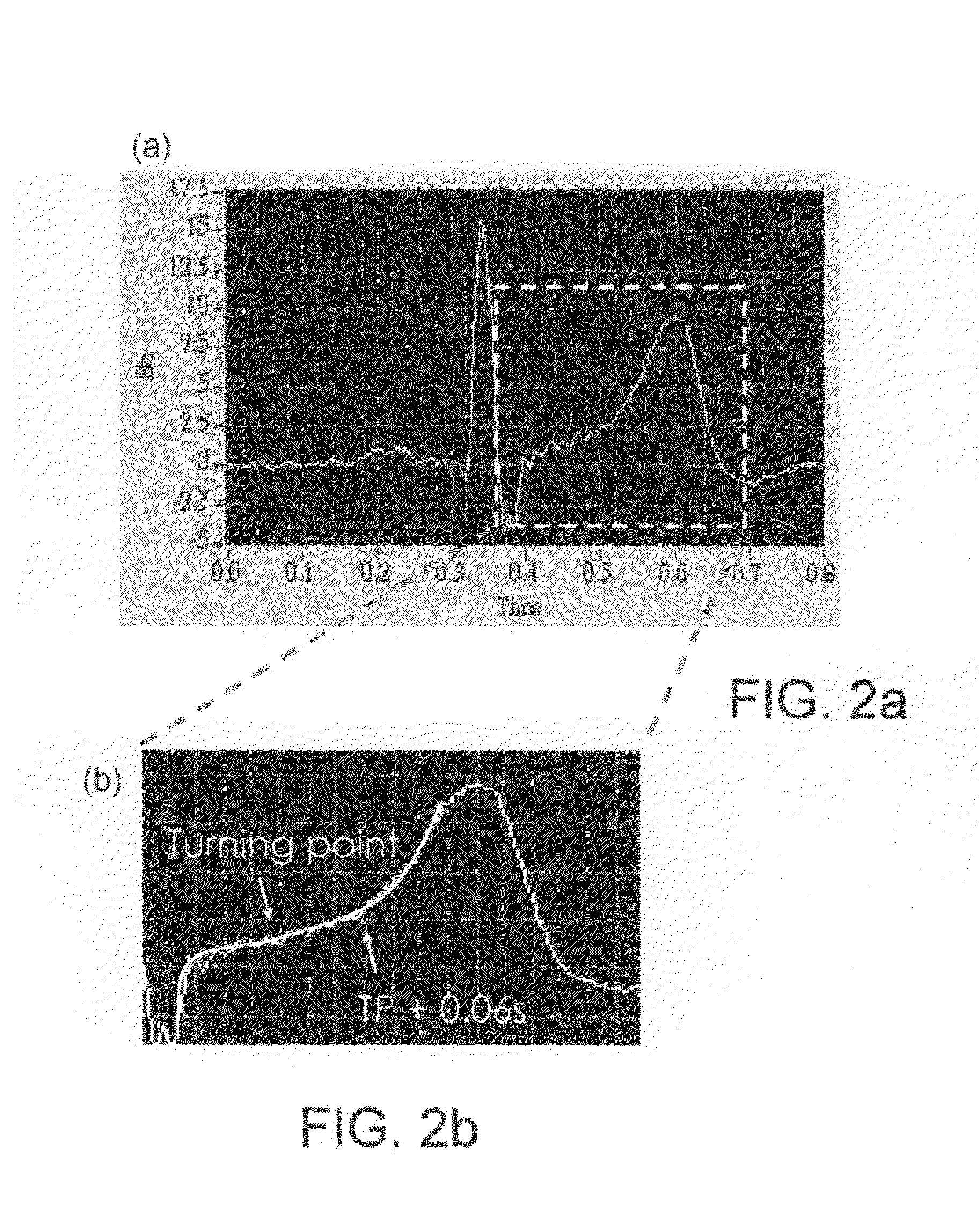Method of examining dynamic cardiac electromagnetic activity and detection of cardiac functions using results thereof
a dynamic cardiac electromagnetic activity and detection method technology, applied in the field of dynamic cardiac electromagnetic activity and detection of cardiac functions, can solve the problems of creating interference between signals, imposing discomfort on patients, uncomfortable and potentially dangerous participants, etc., and achieves enhanced differentiation between normal functioning and abnormally functioning hearts.
- Summary
- Abstract
- Description
- Claims
- Application Information
AI Technical Summary
Benefits of technology
Problems solved by technology
Method used
Image
Examples
Embodiment Construction
[0048]Measurements of MCG
[0049]A multi-channel SQUID system, for example, a 64-channel SQUID system or other type of sensitive superconducting magnetometers, is positioned in a plurality of coordinates, for example in a two-dimension or three-dimensional array slightly above the thorax of a live specimen. Each sensor of the SQUID system registers the local extracorporeal magnet field strength as a function of time. A MCG system normally provides measurement of the magnetic field components perpendicular (z-component) (Bz) to the body surface as a function of time (t). Magnetocardiograph (MCG) has features similar to the P-wave, the QRS complex, the T-wave and the U-wave of the ECG (electrocardiography). FIG. 1(a) is a diagram of Bz-t curves, which are plots of a collection of the spatially distributed magnetocardiac signals along the direction normal to the body surface as a function of time of a study subject using a SQUID MCG system. The collection of the magnetocardiac signals co...
PUM
 Login to View More
Login to View More Abstract
Description
Claims
Application Information
 Login to View More
Login to View More - R&D
- Intellectual Property
- Life Sciences
- Materials
- Tech Scout
- Unparalleled Data Quality
- Higher Quality Content
- 60% Fewer Hallucinations
Browse by: Latest US Patents, China's latest patents, Technical Efficacy Thesaurus, Application Domain, Technology Topic, Popular Technical Reports.
© 2025 PatSnap. All rights reserved.Legal|Privacy policy|Modern Slavery Act Transparency Statement|Sitemap|About US| Contact US: help@patsnap.com



